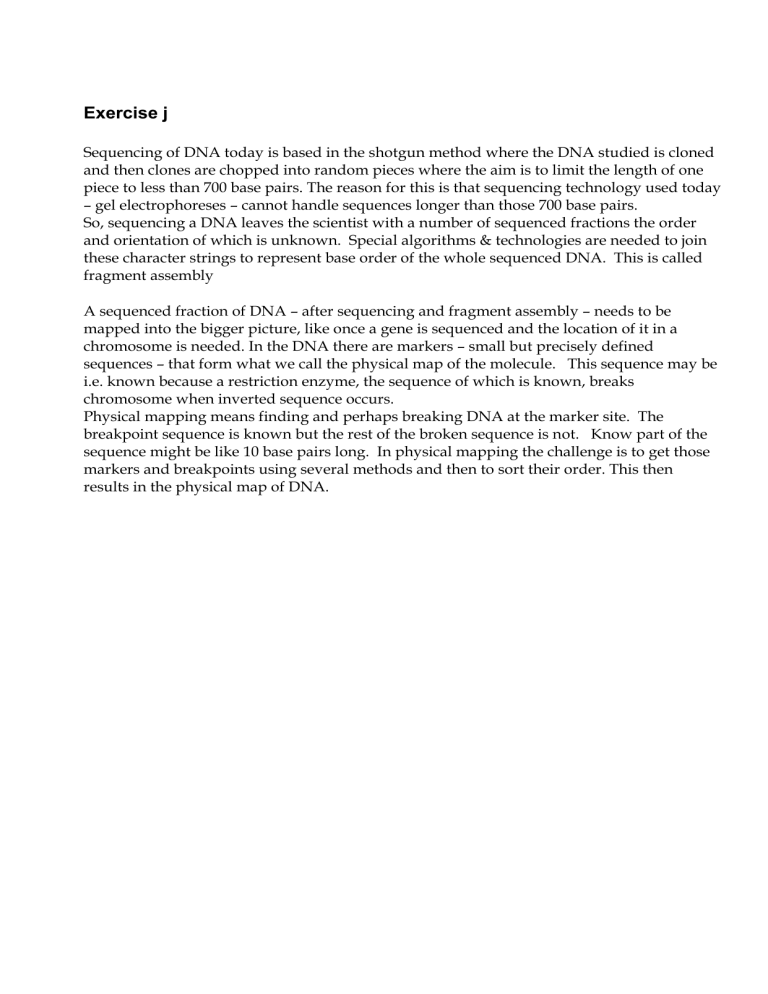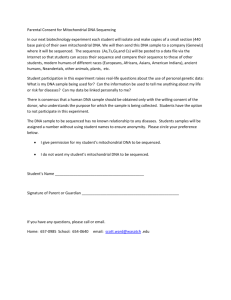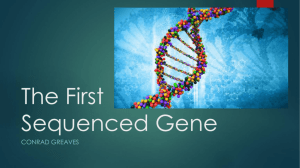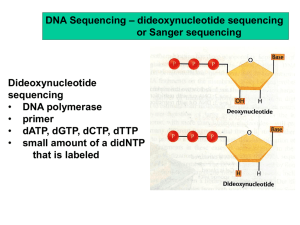Exercise j

Exercise j
Sequencing of DNA today is based in the shotgun method where the DNA studied is cloned and then clones are chopped into random pieces where the aim is to limit the length of one piece to less than 700 base pairs. The reason for this is that sequencing technology used today
– gel electrophoreses – cannot handle sequences longer than those 700 base pairs.
So, sequencing a DNA leaves the scientist with a number of sequenced fractions the order and orientation of which is unknown. Special algorithms & technologies are needed to join these character strings to represent base order of the whole sequenced DNA. This is called fragment assembly
A sequenced fraction of DNA – after sequencing and fragment assembly – needs to be mapped into the bigger picture, like once a gene is sequenced and the location of it in a chromosome is needed. In the DNA there are markers – small but precisely defined sequences – that form what we call the physical map of the molecule. This sequence may be i.e. known because a restriction enzyme, the sequence of which is known, breaks chromosome when inverted sequence occurs.
Physical mapping means finding and perhaps breaking DNA at the marker site. The breakpoint sequence is known but the rest of the broken sequence is not. Know part of the sequence might be like 10 base pairs long. In physical mapping the challenge is to get those markers and breakpoints using several methods and then to sort their order. This then results in the physical map of DNA.











